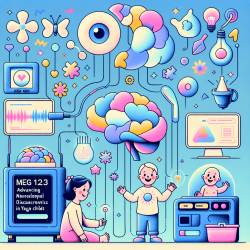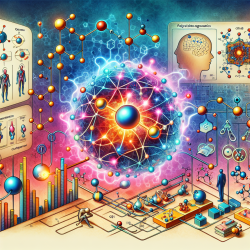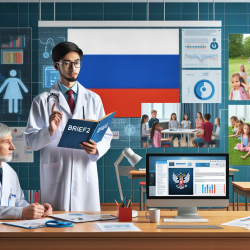Introduction
In the realm of neurodevelopmental disorder diagnostics, early detection is key. The Artemis 123 magnetoencephalography (MEG) system, designed specifically for infants and young children, offers promising advancements in this area. The system's ability to detect electrophysiological signatures, such as resting activity and evoked responses, may serve as biomarkers for disorders like autism spectrum disorder (ASD). This blog explores the potential of the Artemis 123 system to enhance early diagnostic capabilities and improve therapeutic interventions.
Understanding the Artemis 123
The Artemis 123 is a whole-head MEG system optimized for children aged three years and younger. Unlike adult MEG systems, which are not adequately sensitive to the smaller head sizes of young children, the Artemis 123 is designed to provide high-quality recordings by placing sensors closer to the brain. This system allows for efficient recording of auditory evoked neuromagnetic data and resting-state data, which are crucial for identifying neurodevelopmental abnormalities.
Research Findings
The study conducted using the Artemis 123 demonstrated several key findings:
- Generalizability and Reproducibility: Auditory responses were observed in all participants, indicating the system's ability to consistently capture relevant data.
- Sensitivity to Development: The system showed a predictable sensitivity to developmental changes, with latencies decreasing with age, which is crucial for tracking neurodevelopmental progress.
- Localization Accuracy: Phantom data showed that dipole sources could be localized with an error of less than 0.5 cm, underscoring the system's precision.
Implications for Practitioners
For practitioners, the Artemis 123 offers several advantages in improving diagnostic and therapeutic approaches:
- Early Detection: By identifying atypical brain activity early, practitioners can implement timely interventions, potentially altering developmental trajectories.
- Comprehensive Assessments: The ability to record high-quality whole-head MEG data in young children allows for comprehensive assessments of auditory, somatosensory, and visual processing.
- Research Opportunities: The Artemis 123 paves the way for further research into neurodevelopmental disorders, encouraging practitioners to explore new methodologies and interventions.
Conclusion
The Artemis 123 represents a significant advancement in the field of pediatric neurodevelopmental diagnostics. Its ability to provide detailed insights into the developing brain offers practitioners a powerful tool for early detection and intervention. As research continues, the potential for the Artemis 123 to revolutionize the diagnosis and treatment of neurodevelopmental disorders becomes increasingly evident.
To read the original research paper, please follow this link: Artemis 123: development of a whole-head infant and young child MEG system.










